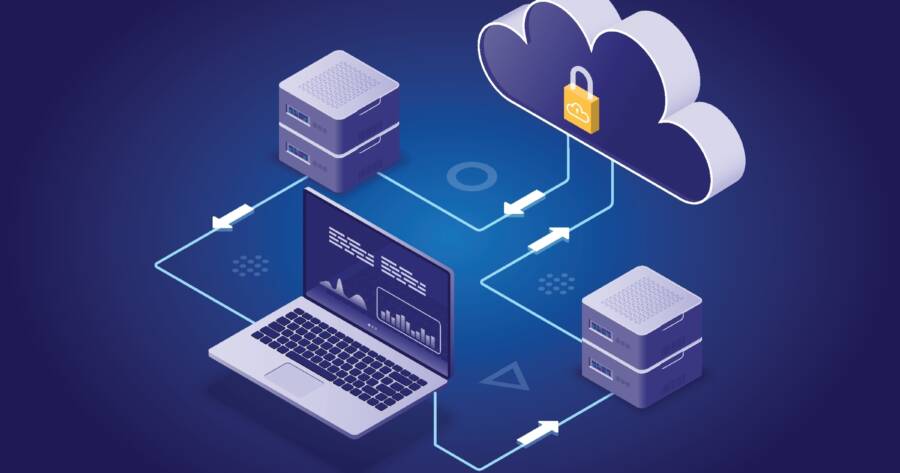In the digital age, safeguarding endpoints like laptops and mobile devices against cyber threats is paramount for organizations. Enterprise endpoint security solutions, including endpoint protection platforms (EPP), employ advanced strategies such as next-generation antivirus (NGAV) and endpoint detection and response (EDR) to ensure robust data protection. Gain an understanding of deployment models, threat intelligence, and managed services for comprehensive defense.
Introduction to Enterprise Endpoint Security
As organizations continue to digitize, the importance of securing endpoints—devices that connect to a company’s network, such as laptops and mobile devices—has never been more critical. Endpoint security involves protecting these access points from malicious activities, ensuring that sensitive data is safe from ever-evolving cyber threats.
Endpoint protection platforms (EPP) and tools are crucial for defending against cyber threats. These platforms are designed to detect, prevent, investigate, and respond to a variety of security threats that an enterprise might face.
Core Components of Endpoint Security Solutions
At the heart of effective endpoint protection lies a suite of technologies and strategies. Among these, next-generation antivirus (NGAV) helps prevent unknown malware while Endpoint Detection and Response (EDR) provides ongoing monitoring to assess and mitigate threats.
For businesses wanting to enhance their security arsenal, threat intelligence and managed threat hunting are vital. These components ensure a holistic approach to mitigating sophisticated attacks by offering deep threat visibility and insights that allow companies to anticipate and respond to emerging threats effectively.
Features and Benefits of Top Endpoint Solutions
Enterprise endpoint security solutions offer a range of features tailored to specific organizational needs. Such solutions are equipped with mechanisms to handle both traditional malware and more complex attacks, using technologies like behavioral analytics and machine learning.
Advanced strategies include real-time defense adaptations and holistic threat response through integrated platforms. In the market, solutions like Microsoft Defender and CrowdStrike Falcon deliver robust security capabilities, leveraging powerful tools for rapid incident response and threat mitigation.
The Importance of Threat Intelligence and EDR
Threat intelligence and EDR are crucial for any enterprise seeking comprehensive endpoint security. While threat intelligence provides insights that help predict potential attacks, EDR actively monitors devices for suspicious activities.
These technologies enable businesses to remain vigilant against both known and emerging cyber threats. Additionally, EDR’s continuous monitoring capabilities ensure rapid identification and response to suspicious incidents, which is essential for reducing breaches and minimizing the impact of attacks.
Deployment Models and Management
With different deployment models such as on-premises and cloud-based solutions, organizations can choose the setup that fits their particular needs. Cloud-native architectures offer enhanced scalability and efficiency, removing security silos and providing a unified interface for endpoint management.
On-premises solutions, on the other hand, continue to offer robust security settings for organizations that require a high level of control over their IT structures. Selecting the right deployment model is crucial as it affects both the effectiveness of threat response capabilities and the overall security posture of a business.
Managed Services: MDR and Proactive Threat Hunting
Managed detection and response (MDR) services are invaluable for organizations lacking the in-house resources to maintain robust cybersecurity. These services provide expert threat monitoring and management, ensuring quick response times to detected threats.
Meanwhile, proactive threat hunting—conducted by specialized teams—identifies hidden threats that automated systems might miss. This collaboration ensures a comprehensive defense strategy capable of addressing sophisticated threats efficiently.
Choosing the Right Endpoint Protection Platform
When selecting an endpoint protection platform, enterprises must consider factors such as the level of automation in incident response, the ability to adapt to sophisticated threats, and resilience against evasive measures. Evaluating vendor capabilities in threat intelligence and hunting is also essential. Top vendors like Bitdefender, Symantec, and SentinelOne offer various strengths that can cater to diverse organizational requirements, ensuring robust protection of business assets against cyber threats.
Why You Should Learn More About Endpoint Security Today
The landscape of endpoint security is ever-evolving due to the continuous shift towards digital and remote work environments. Organizations should stay ahead by integrating comprehensive endpoint security measures, understanding the latest technologies offered by top vendors, and deploying strategies that address emerging threats effectively. By doing so, businesses not only safeguard their digital assets but also ensure seamless operation without the disruptions caused by cyber incidents.
Sources
The Role of ‘Endpoint Protection Platforms’ in Guarding against Cyber Threats
Overview of Leading Security Solutions and their Features
Insights into EDR and Threat Intelligence
How to Choose Effective Endpoint Protection Platforms
Comprehensive Endpoint Security Solutions and Their Applications
